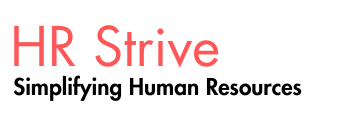As with any organizational initiative, setting SMART goals (Specific, Measurable, Achievable, Relevant, and Time-bound) is essential. These goals help build a compelling business case and guide corrective actions when desired outcomes are not met.
Regardless of the approach or timeline, certain critical factors, tools, and processes drive success:
-
Leadership buy-in
-
Executive sponsorship
-
Employee resource groups (ERGs)
-
Allyship
-
Unconscious bias training
-
Mentorship
-
Psychological safety
-
Use of preferred gender pronouns
These elements are explored in detail below.
Leadership Buy-In
Securing top-level commitment for DE&I initiatives requires demonstrating their strategic value in achieving core business objectives. Advocates must link the general benefits of diversity—such as broader perspectives and innovative thinking—to the organization’s specific mission and challenges. For instance, an organization facing talent shortages due to an aging workforce may leverage diversity initiatives to attract younger talent while retaining experienced staff. Similarly, organizations expanding into new markets must integrate members of target cultures into decision-making roles, making DE&I a strategic business imperative, not just a social responsibility.
This alignment of diversity and business strategies is not new. As early as the 1940s, a U.S. beverage company successfully targeted the underserved African-American market, which reshaped competition and led both market players to embed diversity into their corporate identities.
Given that most organizations reevaluate strategies every five years, DE&I must stay flexible and actively contribute to shaping new directions. Consistent alignment ensures DE&I remains integral even through changes in executive leadership.
Executive Sponsorship
Without active and sustained commitment from executive leadership, DE&I efforts rarely succeed. Executive sponsorship must go beyond symbolic gestures and translate into tangible advocacy and allocation of resources. Leaders may directly sponsor initiatives such as ERGs, serving as role models and demonstrating accountability.
A Forbes Insights study revealed that 70% of organizations place ultimate accountability for DE&I with executives, with 35% assigning it directly to the CEO. Often, the diversity function reports to or is chaired by the CEO. Gardenswartz and Rowe emphasize that "the message about the priority on diversity always gets out."
Leadership at all levels, including HR, must champion DE&I initiatives and drive continuous engagement across the organization.
Employee Resource Groups (ERGs)
ERGs, also known as affinity or network groups, are voluntary groups organized around shared identity dimensions (e.g., race, religion, ethnicity, sexual orientation). Depending on company engagement, ERGs can serve as social and professional networks, advocacy platforms, career development resources, and advisory bodies. They also provide valuable input to diversity councils.
DiversityInc’s criteria for effective ERGs include:
-
Formal charters and executive sponsorship
-
High employee participation
-
Diverse membership representation
-
Active use for recruitment, onboarding, mentoring, and training
-
Success metrics tied to retention, engagement, and business contributions
-
ERG leaders participating in executive diversity councils
ERGs offer both empowerment and opportunity. Some employees join to make a meaningful contribution, while others seek community around aspects of their identity they feel are underrepresented.
Examples of ERG contributions include:
-
Advising on product adaptations for specific cultural markets
-
Recommending design improvements to meet accessibility needs
-
Solving retention issues by addressing family integration challenges for relocated employees
-
Helping resolve translation inaccuracies, which boosts product ownership and saves costs
ERGs act as crucial communication bridges between employees and diversity councils, driving practical solutions and policy input.
Allyship
Allyship should be present at every organizational level. Allies advocate for underrepresented groups by modeling empathy, opening doors, and helping individuals advance. These small, consistent actions contribute to long-term career development.
Allies must avoid acting on assumptions or portraying others as helpless. Instead, they should focus on empowering others while working to remove systemic barriers. Allyship is an ongoing commitment, not a one-off action.
Unconscious Bias Training
Everyone holds unconscious biases, which often influence hiring, promotions, and retention decisions. This training aims to increase self-awareness of these biases and mitigate their impact on decision-making.
As with any training, continuous assessment and feedback are essential to ensure behavior change is achieved. The key question organizations must ask: “Are we seeing meaningful shifts in behavior?”
Mentorship
Mentorship programs advance DE&I by exposing underrepresented employees to professional growth opportunities while offering mentors the chance to broaden their own understanding of different perspectives.
Mentorship can be formal—focused on preparing talent for leadership roles—or informal, aimed at increasing organizational visibility and development. Mentorship and allyship are closely related, often complementing each other to address both career progression and structural barriers.
Psychological Safety
Psychological safety encourages individuals to speak up, take risks, admit mistakes, and ask for help without fear. Research by Prime and Salib shows that leaders who demonstrate empowerment, accountability, courage, and humility foster an inclusive environment where psychological safety thrives.
This, in turn, enhances collaboration, innovation, and learning, which are vital to organizational and DE&I success.
Using Preferred Gender Pronouns
To foster inclusion, many organizations are adopting gender-neutral pronouns (e.g., they/them) and allowing individuals to define how they wish to be addressed. This shift supports non-binary, transgender, gender fluid, and genderqueer individuals and must be reflected across HR systems, forms, policies, and internal communications.
Organizations should encourage employees to include pronouns in email signatures and profiles, offer training, and promote respectful language in verbal interactions.
Additionally, consistently using an individual’s preferred name is just as critical as using correct pronouns. Misuse of either can be deeply harmful and may constitute harassment under some legal frameworks. Best practice calls for organizations to ask, respect, and adapt to changing preferences over time.

No comments:
Post a Comment